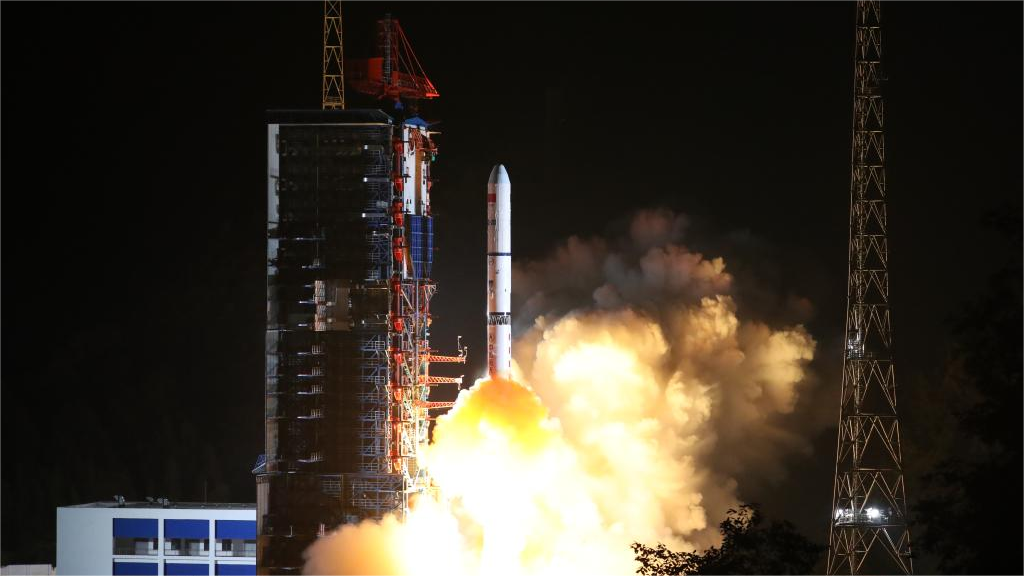Feature: Thousands of families flee S. Lebanon amid border tension with Israel
BEIRUT, Oct. 29 (Xinhua) -- Najiba Sourour, a Lebanese woman in her 60s, grabs a small long-prepared emergency bag and leaves her southern Lebanese village Aita al-Shaab to join a convoy of cars heading to the Tyre city, 26 km north of the country's southern border, to flee from the intense fire exchanged between Hezbollah and Israel in border areas.
As the Israel-Hamas bloody conflict enters the third week, the Lebanese-Israeli border has also seen armed conflict between the Lebanon-based Shiite military group Hezbollah and Israeli forces for more than 20 days.
Staying at a shelter center in Tyre for temporarily displaced Lebanese, Sourour, with her husband and five children, plans to rent an affordable house in the southern city if the tension escalates in her village.
"The border tension brought us back to the 2006 Lebanon war, when villages became empty of residents and shops and gas stations were closed with movement restricted to patrols of the United Nations Interim Force in Lebanon (UNIFIL), the Lebanese army and the Lebanese Red Cross vehicles," said Adam Choucair, a citizen who moved along with his eight-member family from Mays al-Jabal town to Tyre.
"My children were terrified by the sounds of drones and shells falling in our hometown," he said.
According to statistics conducted by municipalities and security agencies, over 30,000 people have been displaced from villages and towns close to the Lebanese-Israeli border since the beginning of the border tensions.
Talal Al-Halabi, head of the Lebanese Red Cross Disaster Management Committee in Nabatieh, told Xinhua that about 1,500 families were displaced to Nabatieh and Tyre, 800 to Hasbaya region, and 700 families were displaced to other villages in southeast Lebanon.
He added most of them moved to shelters, including schools and guest houses, and succeeded in receiving assistance supplies from associations and individuals, while around 20 percent of the displaced moved to houses of their relatives, friends, or rented homes at their own expense.
Mohammad Kheir, secretary general of Lebanon's Higher Relief Committee, said it launched an urgent plan to assist the displaced people in shelters in various regions by distributing mattresses, blankets, cleaning materials, and water bottles with the help of local and international associations.
Labib Al-Hamra, the mayor of Hasbaya, told Xinhua that some hotels in the area were placed at the municipality's disposal to host displaced people from villages in the Arqoub area, and the municipality secures their urgent needs.
Moreover, several housing projects were provided to families free of charge in the southwest town of Al-Ansariyyah.
Hassan Hammoud, vice president of the Union of Municipalities in Tyre, told Xinhua that although the union's capabilities of helping refugees are limited due to the country's economic crisis, it tries to assume its responsibilities within its available means.
Confrontations on the Lebanese-Israeli borders have killed 58 people in Lebanon, including 47 Hezbollah fighters, since the beginning of the "Al-Aqsa Flood" operation on Oct. 7, according to sources in the Lebanese Internal Forces on Saturday.
Photos
Related Stories
- Israel expands ground operation in Gaza as Palestinian death toll exceeds 8,000
- Israel stages overnight ground raid into Gaza
- 9 Arab countries urge UNSC to oblige warring parties in Gaza to accept immediate cease-fire
- Lebanese army receives 2-mln-euro aid supply from Germany
- Ceasefire needed to prevent worse humanitarian disasters
- Roundup: Israeli tanks raid northern Gaza Strip, Arab states urge cease-fire
Copyright © 2023 People's Daily Online. All Rights Reserved.









